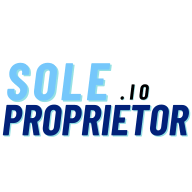How Do You Negotiate Fair Rates?
Navigating the delicate art of negotiation, freelancers often find themselves in discussions about fair pricing for their services. From offering upsells for perceived value to bundling services and creating payment plans, we've gathered insights from four seasoned freelancers, including CEOs and Founders, on their strategies for successful rate negotiations.
- Offer Upsells for Perceived Value
- Articulate Value and Offer Flexibility
- Highlight Long-Term Value and Adjust Scope
- Bundle Services and Create Payment Plans
Offer Upsells for Perceived Value
If you're not getting the price you want, you can offer an upsell on the back end to raise the price while making it feel worth the extra cost to the client. They'll think they're getting more value and be willing to pay the higher price. For example, if you want $100 for a service but the client is only willing to pay $60, you can introduce an upsell to bring the price up. This added service doesn't have to be complex—it might only take you 5 to 10 extra minutes—but you need to convince the client that it's worth the extra cost.

Articulate Value and Offer Flexibility
There was a crucial moment early in my freelancing career when I had to negotiate my rates for a complex project involving AI-driven content generation. The client's initial budget was lower than what I had in mind, so I needed a strategic approach to ensure fair compensation.
I began by clearly defining the project's scope and the value of the work involved. I explained how the advanced AI technology, like ChatGPT, that I planned to use required significant expertise and effort. This helped the client understand the complexities and the high-quality results they would receive, justifying the higher rate.
I also highlighted my unique skills and the specialized tools I would bring to the table. By showcasing how my expertise and the advanced AI tools would deliver superior results compared to less experienced alternatives, I aimed to justify the investment.
To accommodate the client's budget while ensuring fair compensation, I offered flexible pricing options. This included breaking the project into phases, providing a lower rate for an initial pilot phase, or offering different service tiers. This flexibility allowed the client to choose an option that fit their budget while still benefiting from high-quality work.
Throughout the negotiation, I remained open to further discussions and adjustments. I made it clear that while my rates were set based on the quality and expertise provided, I was willing to find a solution that worked for both sides. This approach demonstrated my commitment to delivering value while accommodating their financial constraints.
Additionally, I provided testimonials and case studies from previous clients to reinforce my credibility and the quality of my work. This helped build trust and validated the investment in my services.
In the end, this approach helped me secure a fair price for my work while maintaining a positive relationship with the client. It reinforced the importance of articulating the value I bring and being both flexible and firm in negotiations. This experience has been instrumental in guiding my approach to rate discussions in my freelancing career.
Highlight Long-Term Value and Adjust Scope
I remember working with a client early in my freelance career who loved my work but wanted to pay significantly less than my quoted rate. It was a long-term project, so getting the rate right was crucial for both of us. Instead of lowering my rates right off the bat, I focused on highlighting the value I could bring—explaining how my experience, reliability, and ability to deliver high-quality work would ultimately save them time and money in the long run.
My strategy was to approach it as a win-win. I explained that while I couldn’t compromise on the quality or scope of work for a lower rate, I could offer a package that suited their budget without reducing my hourly rate. For example, I proposed scaling back certain elements of the project or reducing the number of deliverables, allowing them to stay within budget without sacrificing the overall quality of the work.
In the end, they agreed to my original rate, but with a slightly adjusted project scope that worked for both of us. The key was showing confidence in my worth, being flexible on the project terms, and positioning the conversation as a partnership rather than just a negotiation over price. It’s a great reminder that standing firm on value can often lead to a fair and mutually beneficial agreement.
Bundle Services and Create Payment Plans
When negotiating my rates, I consider the client’s situation and the scope of the project. For long-time clients asking for additional projects, I sometimes offer a slight discount or bundle services to maintain the relationship. With startups that can’t afford my standard rates, I’ve structured creative payment plans, such as if they sign a long-term contract, I’m open to reducing my monthly rate slightly in exchange for the security of steady work.
I always ensure that adjustments are reasonable for both sides by considering the value of the work and the potential for future collaboration. In addition, sometimes I allow my clients to buy hours in bulk. So, for example, they know they have contracted with me for 20 hours a month of service, and that often means doing a variety of projects to support the business—anything from competitive intelligence reports to writing thought leadership pieces for executives. It is important to stay flexible but maintain boundaries and know your worth at the same time.




